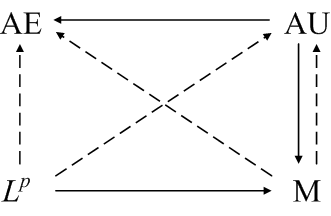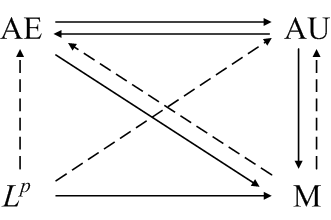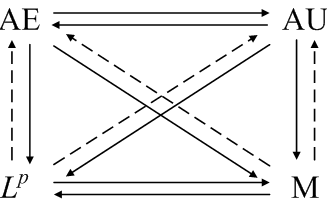The first post in this series introduced random inequalities. The second post discussed random inequalities can could be computed in closed form. This post considers random inequalities that must be evaluated numerically.
The simplest and most obvious approach to computing P(X > Y) is to generate random samples from X and Y and count how often the sample from X is bigger than the sample from Y. However, this approach is only accurate on average. In any particular sample, the error may be large. Even if you are willing to tolerate, for example, a 5% chance of being outside your error tolerance, the required number of random draws may be large. The more accuracy you need, the worse it gets since your accuracy only improves as n-1/2 where n is the number of samples. For numerical integration methods, the error decreases as a much larger negative power of n depending on the method. In the timing study near the end of this technical report, numerical integration was 2,875 times faster than simulation for determining beta inequality probabilities to just two decimal places. For greater desired accuracy, the advantage of numerical integration would increase.
Why is efficiency important? For some applications it may not be, but often these random inequalities are evaluated in the inner loop of a simulation. A simulation study that takes hours to run may be spending most of its time evaluating random inequalities.
As derived in the previous post, the integral to evaluate is given by
The technical report Numerical computation of stochastic inequality probabilities gives some general considerations for numerically evaluating random inequalities, but each specific distribution family must be considered individually since each may present unique numerical challenges. The report gives some specific techniques for beta and Weibull distributions. The report Numerical evaluation of gamma inequalities gives some techniques for gamma distributions.
Numerical integration can be complicated by singularities in integrand for extreme values of distribution parameters. For example, if X ~ beta(a, b) the integral for computing P(X > Y) has a singularity if either a or b are less than 1. For general advice on numerically integrating singular integrands, see “The care and treatment of singularities” in Numerical Methods that Work by Forman S. Acton.
Once you come up with a clever numerical algorithm for evaluating a random inequality, you need to have a way to test the results.
One way to test numerical algorithms for random inequalities is to compare simulation results to integration results. This will find blatant errors, but it may not be as effective in uncovering accuracy problems. It helps to use random parameters for testing.
Another way to test numerical algorithms in this context is to compute both P(X > Y) and P(Y > X). For continuous random variables, these two values should add to 1. Of course such a condition is not sufficient to guarantee accuracy, but it is a simple and effective test. The Inequality Calculator software reports both P(X > Y) and P(Y > X) partly for the convenience of the user but also as a form of quality control: if the two probabilities do not add up to approximately 1, you know something has gone wrong. Along these lines, it’s useful to verify that P(X > Y) = 1/2 if X and Y are identically distributed.
Finally, integrands may have closed-form solutions for special parameters. For example, Exact calculation of beta inequalities gives closed-form results for many special cases of the parameters. As long as the algorithm being tested does not depend on these special values, these special values provide valuable test cases.



